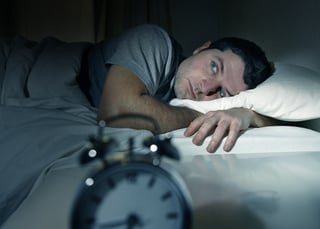On October 5th, 2016, scientists with NIOSH (National Institute of Occupational Safety and Health) released data from a first-ever study on the effects of shift work on sleep disorders. This study was unique in that the data gathered a nationally representative sample of 6,338 working adults ages 18 years old or older.

Scientists know little about the prevalence of sleep disorders broadly in the U.S. workforce because, to date, most studies have been limited to selected occupational groups, geographic areas, and types of sleep disorders.
This study was published on-line in October in the peer-reviewed journal Occupational & Environmental Medicine. The data used was from the National Health and Nutrition Examination Survey (NHANES), and was conducted by the National Center for Health Statistics, a partner center in the U.S. Centers for Disease Control and Prevention.
Based on a recommendation by the National Sleep Foundation that adults should sleep seven to nine hours per night, two categories of sleep duration for the study were created: either less than seven hours, referred to as short sleep duration, or seven or more hours.
Investigators concluded that sleep-related problems were common among workers, especially among night-shift workers who had the highest risks for sleep problems. Moreover, these risks among night-shift workers persisted even after adjustments were made for potentially confounding factors, such as long working hours, socio-demographic characteristics, and health/lifestyle/work factors.
Findings included these:
- 6 percent of the respondents reported short sleep duration, representing 54.1 million U.S. workers. Short sleep duration was more prevalent among night-shift workers (61.8 percent of those who reported short duration) than among daytime workers (35.9%).
- Daytime workers had the lowest prevalence (31 percent) of “prolonged sleep-onset latency,” which is when at bedtime 30 or more minutes are required to go from full wakefulness to sleep — compared with the night shift (46.2 percent), evening shift (43 percent) and rotating shift (42.1 percent).
- Poor sleep quality was reported by 30.7 percent of night-shift workers, and moderate sleep quality by 34.1 percent of workers on another schedule. Night- and evening-shift workers more frequently had difficulty falling asleep (21.7 percent and 21.2 percent, respectively, vs. 12.7 percent of daytime workers). Night-shift workers had a higher prevalence of feeling excessively or overly sleepy during the day (22.3 percent vs. 16.2 percent).
- Workers 60 years old or older had a lower prevalence of short sleep duration, impaired sleep-related activities of daily living (ADL), and insomnia than those 30 to 59 years old.
- Insomnia, which is defined as having both poor sleep quality and impaired sleep-related ADL, was reported by 18.5 percent of night-shift workers compared to 8.4 percent of daytime workers.
- Female workers had a lower prevalence of short sleep duration but a higher prevalence of the other three sleep outcomes (poor sleep quality, impaired sleep-related ADL, and insomnia) than male workers.
- Obese workers had a higher prevalence of short sleep duration and poor sleep quality than those who were normal weight/underweight.
- Current smokers had a higher prevalence of short sleep duration, poor sleep quality and insomnia (but not impaired sleep-related ADL) than non-smokers.
- Workers who worked 48 hours or more per week had a higher prevalence of short sleep duration, poor sleep quality and insomnia than those who worked less than 48 hours per week.
- Workers who frequently used sleeping pills had a higher prevalence of poor sleep quality, impaired sleep-related ADL and insomnia (but not short sleep duration) than those who did not.
- A higher prevalence of all four sleep outcomes (short sleep duration, poor sleep quality, insomnia, and impaired sleep-related ADL) was observed among workers who were widowed, divorced or separated; workers who reported fair or poor health; workers with symptomatic depression; and workers who had a physician-diagnosed sleep disorder – than among workers who did not have those characteristics.
As always, feel free to contact the experts at Hausmann-Johnson Insurance with any questions regarding Health & Safety for you and your employees.
If you'd like to learn more about this study and how sleep can affect your employees, register for our webinar - NIOSH Sleep Study: Taking a Look at Sleep Deprivation and Work Performance

COMMENTS